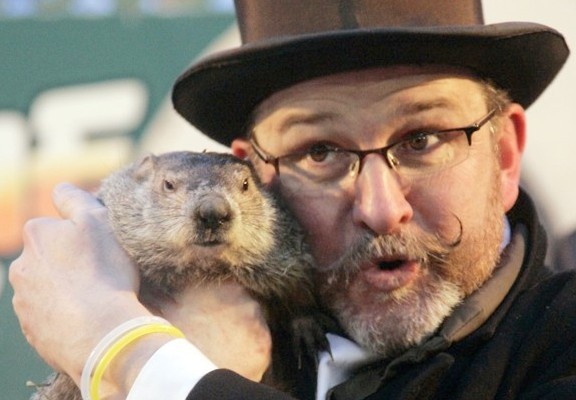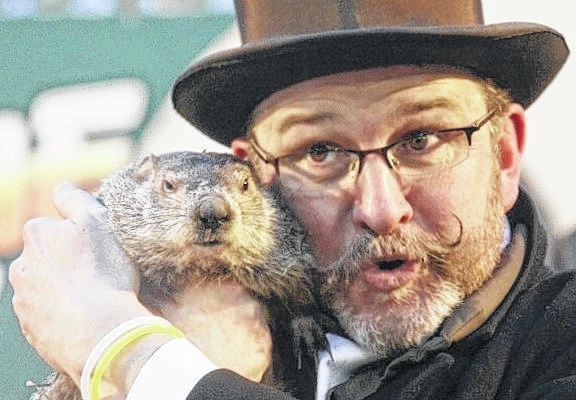Today, groundhogs all over the country will be popping out of their burrows to let the rest of know whether we will have and early spring or six more weeks of winter. However, as much of a shock it may be, there is no scientific basis for those prognostications.
“There is absolutely no science involved in those predictions,” said Rick Kreitner, a forecaster with the National Weather Service in Wilmington. “There is zero skill.”
According to Wikipedia, Groundhog Day is a traditional holiday celebrated on Feb. 2. According to folklore, if it is cloudy when a groundhog emerges from its burrow on this day, then spring will come early; if it is sunny, the groundhog will supposedly see its shadow and retreat back into its burrow, and the winter weather will persist for six more weeks.
Groundhog Day was adopted in the U.S. in 1887. Clymer H. Freas was the editor of the local paper Punxsutawney (Pa.) Spirit at the time, and he began promoting the town’s groundhog as the official “Groundhog Day meteorologist.” It is that town’s groundhog, Punxsutawney Phil, which remains the “king” of all prognosticating groundhogs — but there are numerous others that have jumped on the weather prediction bandwagon over the years.
The state of Pennsylvania has, by far, the most groundhogs making predictions — including Cocalico Chuck, Lawrenceville Lucy, Dover Doug, Mount Joy Minnie, Poor Richard, Susquehanna Sherman, Uni, Octorara Orphie, Pine Grove Grover, Patty Pagoda.
North Carolina has the second-most number of groundhog prognosticators with five: Grady the Groundhog (Chimney Rock), Queen Charlotte (Charlotte), Sir Walter Raleigh (Raleigh), Nibbles (Asheville) and Mortimer (Garner).
Other states with their own groundhogs predicting the weather includes: Colorado, Stormy Marmot; New York, Staten Island Chuck; Ohio, Buckeye Chuck; Tennessee, Chattanooga Chuck; Connecticut, Chuckles; West Virginia, French Creek Freddie; Georgia, Gen. Beauregard Lee; Wisconsin, Jimmy the Groundhog; Illinois, Woodstock Willie; Michigan, Murray; and Washington, D.C., Potomac Phil.
But the “king” of all groundhogs remains Punxsutawney Phil.
When he’s not on stage making his famous prediction on Feb. 2 each year, Phil lives in a climate-controlled burrow located at the Punxsutawney Library. He is placed in a heated burrow underneath a simulated tree stump on stage before being pulled out at 7:25 a.m. to make his prediction.
Phil has seen his shadow in three of the past four years.
“From what I’ve seen, it’s about 50-50 (for Phil being correct),” Kreitner said. “But we honestly don’t track that kind of thing here.”
He added that, according to the climatology factors — including El Nino — this portion of the country can expect to see a cooler and wetter than normal spring.
“The seasonal outlook for February through April tells us there will be close to normal temperatures, but a greater chance for precipitation,” Kreitner said. “But it’s too early to say whether it will be in the form of rain or snow.”
W. Curt Vincent can be reached by calling 910-862-4163.



